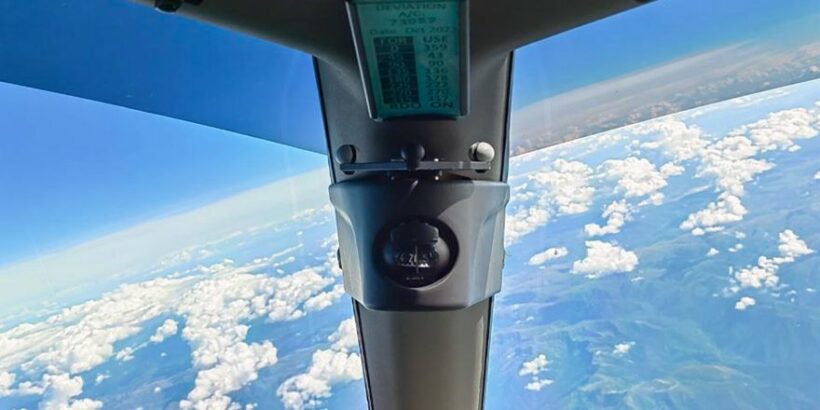MC-21 is the most “under-sanctioned” civil aircraft in the history of Russian aircraft manufacturing. The pressure on it from Western “partners” began long before the first flight: in 2014, problems arose due to the refusal to supply carbon fibres from the USA. Then the problem was bought, other suppliers were found.
In 2018, the “partners” went further and completely stopped the supply of polymer-composite materials for the aircraft, due to which the plans for the start of commercial operation shifted to the right by about four years.
In 2021, it was announced that in 2022, the first aircraft would be delivered to the fleet of Rossiya Airlines, but the complete breakdown of all cooperation ties, the ban on the supply of components and engines due to anti-Russian sanctions against our civil aviation led to another delay, and the import substitution programme had to be forced on an emergency basis. In the course of the aircraft modifications, the designers had to abandon the American Pratt & Whitney PW1400G engine, replace imported composite materials and over 80 foreign systems and units with Russian ones, conduct certification tests and obtain approval of the main design changes in the wing and engine.
This small excursion into history is given here for those who with manic persistence and ostentatious patriotism ask: “Until the coli? How much can we do? Where, where is the aeroplane???? It will never fly!” At the same time, he calls not to nod in the direction of sanctions, but to look for the sources of problems in ministries and corporations inside the country. But it is impossible to ignore the restrictions imposed by some Western countries, because sanctions are an objective reality that has had a serious negative impact not only on the MC-21 programme, but also on Superjet, Ka-226 and Ka-62 helicopters.
Now import substitution is in the middle of the road. Design work continues, prototypes of units to be installed on the aircraft are being manufactured, and flight certification tests are being carried out. The work is difficult, painstaking and does not allow a superficial attitude. All the systems to be replaced must be reliable and ensure safety and functionality that was prescribed in the technical specification for the aircraft with foreign components. And despite the fact that the public information field does not include everything that is going on in the design bureau and factories, the process is underway and we will see its completion in less than a year and a half.
* * *
On the 2nd of August the MC-21 prototype aircraft b/n 73057 returned from Ulyanovsk to Irkutsk. The aircraft arrived at Ulyanovsk-Vostochny airport on 18 July. The aircraft was painted in the corporate colours of the United Aircraft Corporation at Spectr Avia. Earlier this aircraft had registration 73361. The wing of the aircraft is made of Russian PCM, power plant – two geared PW1400G turbofan engines. In autumn 2022, the board flew for certification of the Russian composite wing.
According to plans for 2021, this particular aircraft was to be the first commercial MC-21 in the Aeroflot group. However, the cessation of supplies of foreign components to Russia led to the need to connect the board to certification flights under the import substitution programme. And that is why in July the aircraft was re-registered from the civil register (RA-73361) to the experimental one.
* * *
Until 2030 ONPP Technologiya will produce and send to Rybinsk ODK-Saturn 30 thousand composite panels for PD-8 and PD-14 engines. The multilayer honeycomb sound-absorbing panels are designed to reduce noise in the aircraft engine, while the workable ones are designed to ensure its efficient operation. The panels are entirely made of domestic composite materials.
* * *
The government continues to make decisions to support the domestic aircraft industry. In order to expand the production of MC-21 aircraft, the rules for granting subsidies from the federal budget will be changed, which will enable a number of aircraft manufacturers to use about 20 billion roubles for technical re-equipment.
* * *
Flight tests of the MCS-21 aircraft continue in Zhukovsky. In August, two prototype aircraft 73053 and 73054 performed flights to test a new version of the automatic control system software and integrated control system in order to extend the type certificate in the future to provide landing under ICAO Category III. In these flights, fully automatic landings were performed for the first time, as well as takeoffs using an automatic thrust unit.
The two aircraft performed a total of 19 flights in August, totalling more than 65 hours.
In Irkutsk, a series of flights of 73057 began on 23 August on a programme to determine the fuel consumption characteristics of an aircraft with a wing made of domestic PCM. As explained in the Yakovlev Design Bureau, these flights are performed for the subsequent comparison of the characteristics of the serial aircraft after the planned replacement of engines with domestic ones. Currently, the 73057 aircraft is fitted with PW1400G TPDs. In August, the aircraft performed four flights totalling almost 17 hours.



